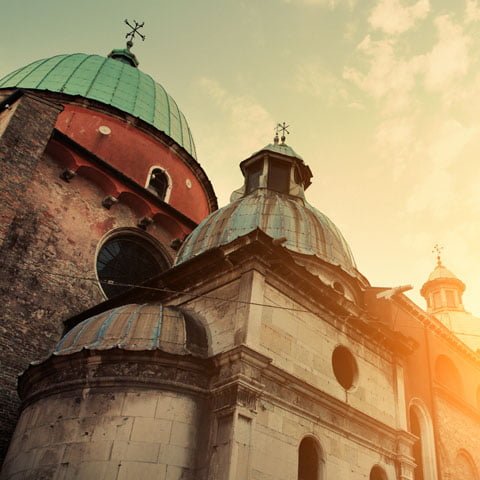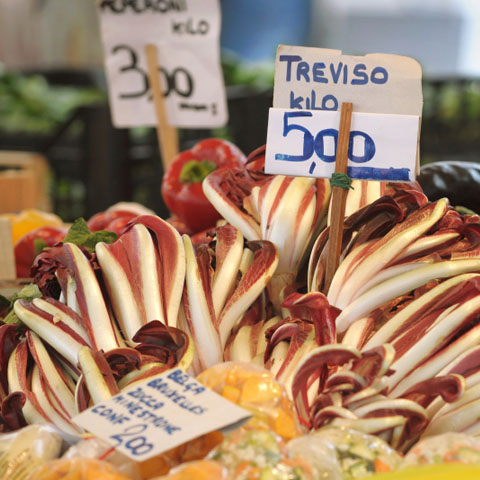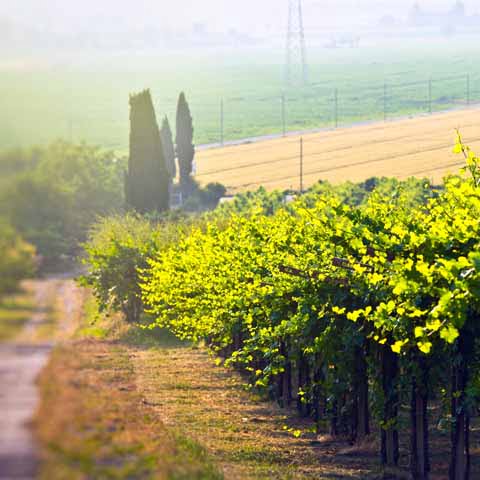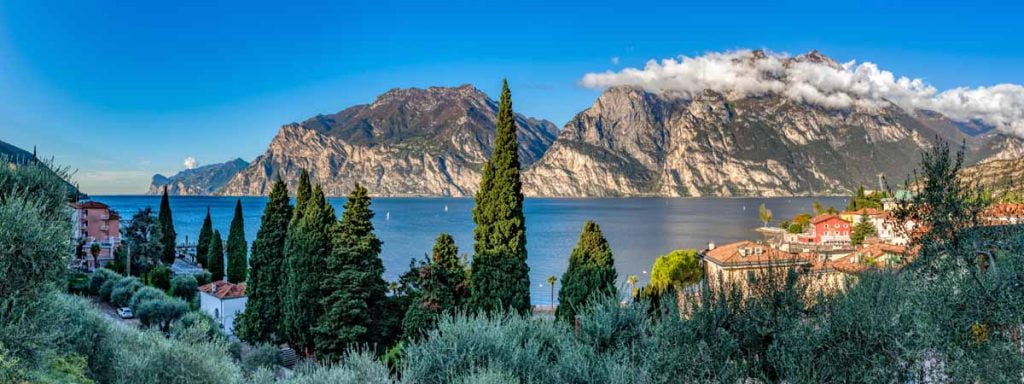Overshadowed by nearby Venice, Treviso is city of water and art to visit during any season. The canals that wind through the historic heart of the city make it enchanting. Surrounded by medieval walls, embellished with ancient buildings, enriched by frescoed churches and palace façades, Treviso, among other things, is known for good food and wine.
FESTIVALS & EVENTS
An ancient pagan event that is still actively celebrated today is the Panevin. A symbolic fire is intended to serve as a benevolent bearer of good fortune for the new year. The misfortunes of the past are symbolically destroyed in the fire.
A characteristic event in Treviso is the Antique Market held in the historic city center on the fourth Sunday of every month.
Suoni di Marca is an annual music festival that takes place during the summer. Music is the main ingredient for this event widely appreciated by locals and visitors alike. In addition to music, Suoni di Marca Festival has always given space to art, crafts, and gastronomy with an emphasis on promoting local products.
Treviso Suona Jazz is the Treviso city Jazz Festival, a week-long musical performance created and organized by a local cultural association together with the collaboration of Treviso’s local government. The aim of the event is to create an exclusive link between music, art, and architecture. Concerts are organized in churches, museums, ancient palaces dating back to the Renaissance period, auditoriums, and theaters.
Throughout the year, the city of Treviso celebrates its authentic Italian cuisine and wine tradition.
In Conegliano, CocoFungo and CocoRadicchio are gastronomic events that attract many visitors every year. Mushroom is the absolute protagonist during CocoFungo. Born in the 1976, this is an annual event that occurs during the fall and winter months to highlight the versatility of the mushroom, a product widely used in the cuisine of the Pre-Alps area of Treviso.
CocoRadicchio is a winter festival dedicated to the “flower that you can eat”, that is the red radicchio of Treviso, noble chicory from the province of Treviso that bears the PGI (protected geographical indication) brand.
OUTDOOR
The Sile River is a constant presence in Treviso together with the historic walls that surround the city. Redesigned during the sixteenth century, the walls were integrated with a hydraulic system that used the water of the canals as a further defense. In the city, you can still see wheels of ancient mills reflected in the rivers and canals.
Walking along the waterways of Treviso, visitors can cross the Ponte San Francesco, which dates back to the fourteenth century. Porta San Tommaso, a Venetian-Lombard construction, has a façade decorated with trophies of arms and coats of arms and with a large lion in the center. It is the most elaborate of the three Venetian gates still existing in the city. The gates were once the main source of connection between the urban center and the more rural areas surrounding the city. Porta San Tommaso was erected towards the north, Porta Santi Quaranta towards the west, and Porta Altina towards the south.
For nature lovers, Treviso’s surroundings offer much to experience. Rivers, streams, and canals are undisputed protagonists in the area. One of the main Italian rivers, the Piave, crosses the province. Today, the Piave River represents one of the most important and interesting fluvial ecosystems of the Italian territory and of the entire European continent. Its course constitutes a considerable natural and environmental heritage, with more than 2,400 acres of protected forest, rivers, and protected zones for the safeguard of birds as well as hundreds of flora and fauna species. The beauty of the Piave valley also caught the attention of famous American writer Ernest Hemingway and inspired his later works. As part of the U.S. Army, Hemingway was stationed in the area over the course of several weeks in 1918, and eventually his experiences influenced his masterpiece A Farewell to Arms.
The Sile River extends in its entirety between Treviso and Venice along the Veneto plain. The river is continuously navigable. The natural environment features meadows, woods, and wetlands.
Montello Natural Park is perfect for cycling or trekking. There are routes well equipped to satisfy all experience levels, from experts to amateurs. The park is home to nearly 100 registered caves, many of which can be visited.
Travelers cannot miss the Caglieron Caves. Just over 30 miles north of Treviso, they are a series of evocative caves formed by the eponymous torrent whose waterfalls are truly amazing. In addition to their beauty, the Grotte del Caglieron are appreciated for their cool climate in the summer. During the winter, the waterfalls freeze and create an incredible landscape.
INDOOR
The museums of Treviso provide a comprehensive overview of the historical and cultural heritage of the city and the surrounding area, known as Marca. The civic museums are a must see on any itinerary with a stop in Treviso. They include the Museum of Santa Caterina, the Luigi Bailo Art Museum and the Ca’ da Noal – Casa Robegan. Treviso’s Museum of Santa Caterina is the home of the city’s collections of ancient art spanning the Bronze Age through to the Renaissance. The deconsecrated Gothic Church of Santa Caterina features the frescoes by Tommaso da Modena entitled the Sant’Orsola Cycle. The art gallery houses many major masterpieces of Italian art from the fifteenth to the eighteenth centuries with artists such as Lorenzo Lotto, Gentile da Fabriano, Giovanni Bellini, Tiziano Vecellio (known in English as Titian), Francesco Guardi, and Tiepolo all represented. Not to be missed is the extensive archaeological collection, which provides a glimpse at how people lived in this area from the Bronze Age through to Roman times.
The Luigi Bailo Museum is dedicated to art collections from Impressionism to the avant-garde movement. It is housed in a Renaissance-era monastery founded during the fifteenth century by the Jesuit Fathers of Saint Jerome. The name of the museum derives from the abbot Luigi Bailo (1835-1932) who had a great passion for art and collected an inestimable treasure for the city of his birth. The Galleria del Novecento collects about 340 pieces dating from the 1850s to the 1950s, with the highlight being provided by the great sculptor Arturo Martini (1889–1947).
Ca’ da Noal – Casa Robegan is a medieval complex. It typically hosts temporary art exhibitions. The beautiful gardens are also worth a visit.
An unmissable place for art lovers in the city is the Capitolo dei Domenicani. It is located in the Seminary of Treviso, which in addition to welcoming the communities of seminarians, preserves precious testimonies of history, art, and culture. An absolute jewel of Italian painting, the Sala del Capitolo dei Domenicani is frescoed with 40 works of art by Tommaso da Modena in addition to the Byzantine-style crucifix punctuated by a splendid decorated medieval wooden ceiling.
Another popular museum in Treviso is the Museum Diocesano of Sacred Art. In 1988, the current Diocesan Museum was inaugurated in its final location. Located in one of Treviso’s oldest buildings, the structure has undergone countless extensions over the centuries. Here, the Romanesque cloister and loggia can be admired, as well as interesting traces of medieval wall paintings found thanks to restoration interventions.
The museum collects Romanesque and Gothic sculptures from the ancient medieval cathedral including a wonderful wooden work depicting the Last Judgment, an example of fourteenth-century Venetian sculpture; refined antique pieces of goldsmith art from the thirteenth to the fifteenth centuries; and liturgical vestments of valuable Venetian and French manufacture from the seventeenth and eighteenth centuries. The art gallery preserves works by local and Venetian artists from the fifteenth to the eighteenth centuries.
Another interesting indoor experience is visiting Treviso’s many churches. The Duomo is a remarkable monument known for its frescoes by Pordenone and an altar piece with the Annunciation by Titan located in the Malchiostro Chapel.
The Dominican Church of San Nicolò, with its famous Capitolo room filled with frescoes by Tommaso da Modena is also worth visiting.
Santa Lucia is a fourteenth-century church divided into three naves with four bays, covered by cross vaults supported by stone columns with leaf capitals. The floor is diamond-shaped and composed of Verona and biancone marble. The vaults are all decorated; eight bays were frescoed in the fourteenth century while the other four were painted by Mario Botter in the twentieth century.
Through a door located in the right apse of Santa Lucia, visitors can enter the bright and large sixteenth-century Church of San Vito. Visitors cannot fail to notice the precious organ by Domenico Malvestio. The Chapel of the Redeemer is decorated with frescoes dating back to the end of the twelfth century. The main altar is enriched by a painting from the second half of the sixteenth century attributed to Marco Vecellio, nephew of the famous Titian.
SHOPPING
Treviso is not a city known for its shopping. However, for those that cannot help but take a look at the shop windows and perhaps buy a souvenir of the city, Calmaggiore is the right place. This is the main road in the center of Treviso that connects the Duomo with Piazza dei Signori and is lined with arcades and shops that can get quite crowded during the weekends. Additionally, a modern copy of the famous Fontana delle Tette is located here. According to legend, the original fountain was said to pour white and red wine during special celebrations.
FAMILIES AND KIDS
Il Parco degli Alberi Parlanti, the Talking Tree Park, is located inside the public park of Villa Margherita. A section is dedicated to cartoon secrets, with historic pre-cinema machines that can be operated by children. Thanks to a cinematic technique, the young visitors will enter a cartoon. In the section called “Dreaming of the Moon”, children will dream of hovering on a flying carpet and can also try the inventions of Leonardo da Vinci including the bird wings. They will then explore a path dedicated to stars and planets.
The ancient history of the province of Treviso, whose roots date back to prehistoric times, can be discovered in the Livelet Teaching Archaeology Park. Many have dreamed of being able to travel through time and above all to return to the past; at the park, this is possible through a series of sensory, visual, and hands-on experiences in a natural environment recreated on a scientific basis. Here children can experience the everyday life of ancient man by visiting the artificially rebuilt homes and can interact with materials, utensils, hunting, and farming equipment.
UNIQUE EXPERIENCES
One of the best ways to soak up Treviso’s culture is to spend some time in the city’s main city square: Piazza dei Signori. Piazza dei Signori is the heart of the city and the primary meeting place for the locals. The square is home to the famous Palazzo dei Trecento, where the municipal assemblies (made up of three hundred members) met. Other interesting buildings in the Square are Palazzo del Podestà with its nearly 160-foot tower and Palazzo Pretorio with its seventeenth century façade. Also worthy of a mention is the elegant Loggia dei Cavalieri.
Surrounded by Venetian city walls and located at the confluence of several rivers, Treviso is characterized by a unique cityscape. Visitors to Treviso can explore the medieval architecture, admire frescoes by Tommaso da Modena, and unwind in the local parks and natural areas.
Travel Guides
The Veneto Region of Italy
The Cities of Veneto, Italy









